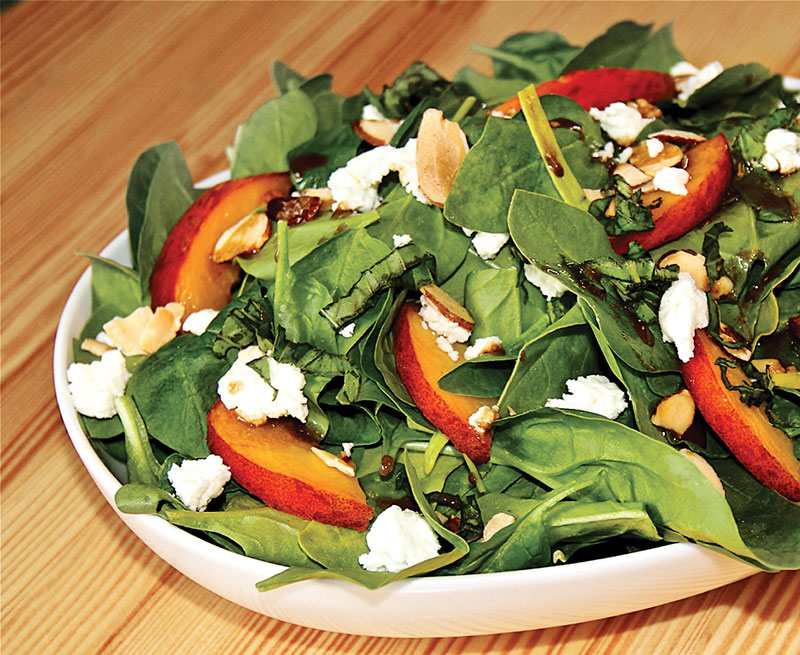“Franchising is a great way to grow,” says Nicolas Jammet, one of the three Georgetown University graduates who founded the concept during their last year of college.
“There are good franchising business models, but we’re having a lot of fun doing it all ourselves and we don’t want to hand over control. Plus, the sourcing we do with local farmers might be more difficult to do with franchising.”
The three seem to be doing just fine on their own. In as little as five years, they’ve grown the booming farm-to-table concept to 15 stores in the Washington, D.C., area, New York City, and Philadelphia. The first Boston location is set to open this spring, and Jammet says the goal is to open an additional eight to 10 stores a year for the next few years.
The inspiration for a restaurant that serves healthy, sustainable, and affordable offerings came to the three business majors during a college entrepreneurship class.
They were enduring what Jammet calls “the nagging everyday problem of having nowhere to eat.” So they wrote a business plan, found a space and an architect, and spent their last year of college building a restaurant between classes.
Sweetgreen
Cofounders: Nicolas Jammet,
Jonathan Neman, and Nathaniel Ru
HQ: Washington, D.C.
Year Started: 2007
Annual Sales: Undisclosed
Total Units:15
Franchise units: 0
Within three months of graduating from Georgetown, the trio opened the doors to their first unit. In keeping with its homegrown reputation, each Sweetgreen unit is designed to reflect the look and feel of the neighborhood in which it’s located.
Sweetgreen’s primary offerings are simple: salads, wraps, and salads on warm grains. A basic build-your-own salad or wrap at Sweetgreen is $6.35; an average ticket is between $9 and $11. The house-crafted salads and wraps range in price from $7 to $11.
The most popular of these is the Guacamole Greens, which combines mesclun with avocado, grape tomatoes, red onion, crushed tortilla chips, and roasted chicken or shrimp. It is topped with lime cilantro jalapeño vinaigrette and a fresh lime squeeze. There is also a rotating seasonal salad.
In addition, Sweetgreen offers one soup selection each season—butternut squash for winter—and organic frozen yogurt with toppings.
The tart yogurt, Jammet says, is a nice finishing touch to a meal, but not a significant part of Sweetgreen’s business.
Sweetgreen’s management has decided to stick to its nutritional guns with the beverage menu, much to the dismay of a few disgruntled guests jonesing for a diet cola. The drink menu consists of bottled water, house-made tea and lemonade, and bottled tea.
“A few locations have all-natural soda fountains, but most don’t,” Jammet says. “A lot of our customers do love Diet Coke and freak out at first because we don’t have it, but that’s the reality. It doesn’t fall within our mission, so they get something else.”
The concept recently rolled out a line of proprietary bottled organic juices called Sweetpress. “It is 100 percent raw juice that has been cold pressed, which is a form of juicing that uses pressure rather than a blade,” Jammet says.
He says the juice can serve as a complete meal replacement, a snack, or a meal complement.
“Customers have really embraced it,” he says. “Some people will buy one at lunch and save it for an afternoon pick-me-up snack. I drink one for breakfast every day.”
A 12-ounce bottle sells for $6. Flavors include Energize, made with orange, carrot, grapefruit, ginger, and cayenne; and Satisfy, made with carrot, beet, apple, cucumber, lemon, and parsley.
Jammet says Sweetgreen customers tend to have a common mindset: they are health-minded, well-educated, and very social.
“They are conscientious about their body and what they put in it,” he says. “For lunch, a lot of our business is driven by convenience, but our stores are pretty busy at night because we embody that mindset and people will seek us out.”
Word of Sweetgreen has spread primarily through social media, along with the chain’s most significant and unique marketing effort, the Sweetlife Music Festival. The annual event attracted about 15,000 people last year, when it featured bands like The Shins, Explosions in the Sky, and fun.
“The festival started when we opened our second store,” Jammet says. “It was on DuPont Circle in D.C. and it was a big store—three times bigger than our first store.”
The problem was, they opened the doors and no one came.
“So we set up a big speaker outside and blasted music every weekend,” Jammet says. “We also gave a lot of samples to the people who came to hear the music, and once we got the customers, we kept them.”
Building on the wild success of the street music, Sweetgreen decided to throw a block party in 2009, which attracted about 300 people. This led to the inaugural Sweetlife Festival in 2010, which featured an array of local bands.
“The event just clicked for us,” Jammet says. “All these people were connecting with our brand. It was incredible.
“We knew we needed to do it every year,” he continues. “It’s a rock concert where people are eating healthy and learning about energy and composting and other sustainability issues.”
Sweetgreen also takes its message into classrooms, teaching fourth- and fifth-graders about healthy eating and where food comes from in a program called “Sweetgreen in Schools.”
“All of our marketing is experiential,” Jammet says.











